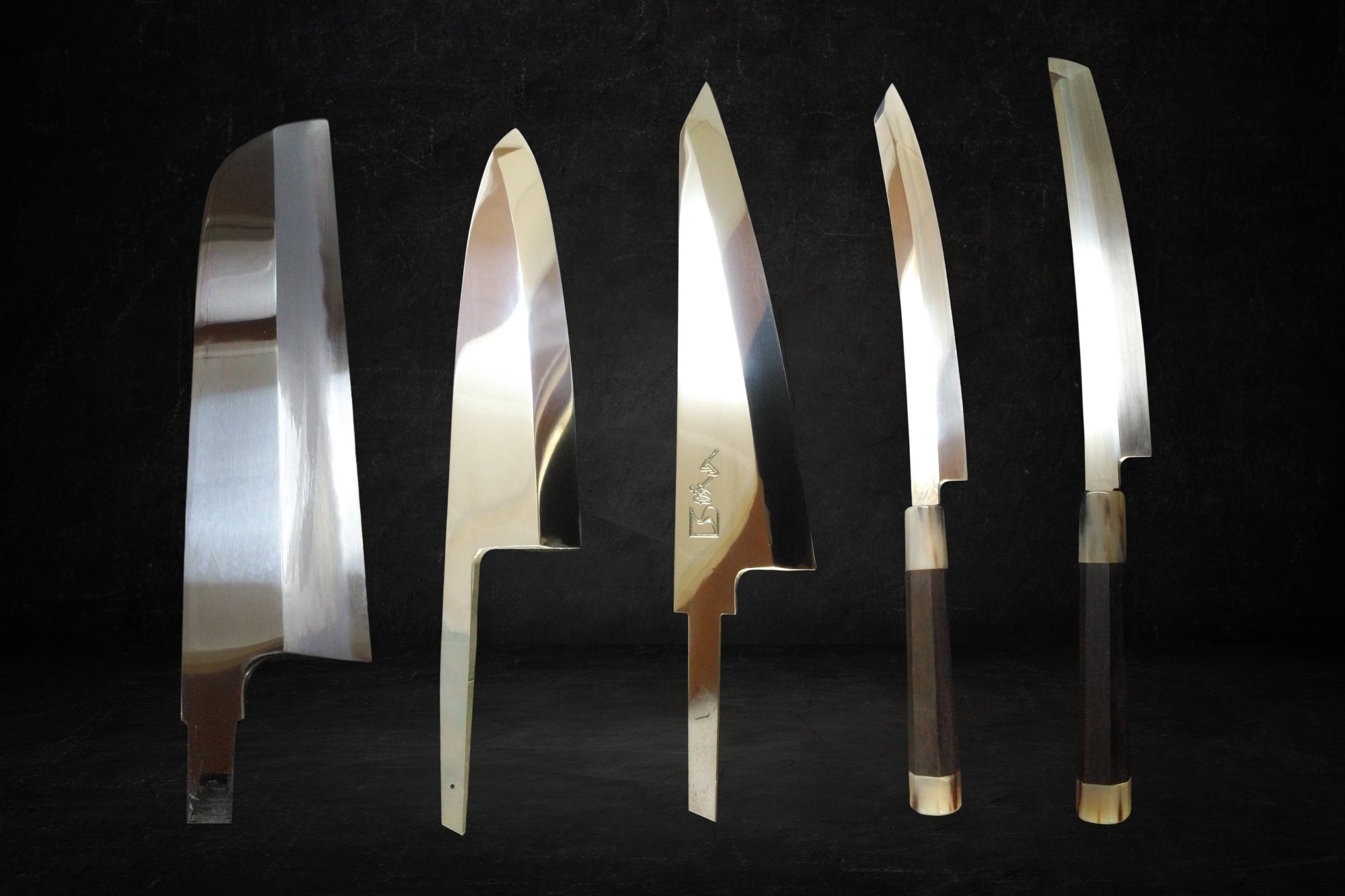
Unveiling the Mystique of Whetstones: A Journey from Ancient Craft to Modern Mastery
Share
Whetstones, the unsung heroes of the culinary and crafting worlds, boast a history as rich and textured as the blades they sharpen.
A Glimpse into the Past
The art of whetstone use is steeped in history, tracing back to when early humans discovered the utility of sharpened stones. This era laid the groundwork for what would become a sophisticated craft, especially during Japan's feudal period. The era heralded the rise of the "togishi," artisans dedicated to the meticulous art of sword polishing with natural whetstones, sourced from the heart of Japan's mountains.
The Transition to Modernity
The landscape of whetstone use underwent a dramatic transformation post-World War II. The advent of synthetic whetstones marked a new era, driven by the scarcity of natural resources and the demands of a rapidly modernizing world. These synthetic variants offered consistency and accessibility, traits that natural stones, with their unique, albeit irregular, characteristics, couldn't always guarantee.
Understanding Synthetic Whetstones
In the realm of synthetic whetstones, diversity abounds. They are primarily categorized by their manufacturing processes - the Magnesia, Vitrified, and Resinoid methods, each with its unique attributes catering to various sharpening needs.
-
Magnesia Method: Known for its versatility, this method uses cement-based binders, accommodating a wide range of grit sizes. Its main drawback is its susceptibility to water damage and cracking over time.
-
Vitrified Method: Firing the whetstones at high temperatures produces an uneven surface, mainly from Rough whetstones to Medium whetstones.
- Resinoid Method: It is produced at a low temperature of 200°C and is mainly used for Medium whetstones to Finishing whetstone.
The Art of Choosing Whetstones
The coarseness of a whetstone, referred to as "grit," is the most crucial factor to consider when choosing one.
Grit, denoted by numbers following "#" in the knife world, signifies the size of particles on the whetstone's surface.
Smaller grit numbers indicate coarser particles, while larger numbers denote finer particles.
The variation in coarseness affects the abrasive power of the whetstone, determining how effectively it can sharpen.
Whetstones are categorized into three types based on coarseness: Rough whetstone, Medium Whestone, Finishing whetstone.
Rough whetstone
Of the three types of whetstone, the coarsest are those used mainly in the shaping process, which is the first step in sharpening. In the case of synthetic whetstones, it often refers to those with a grit size of #320 to #800. Due to the coarseness of the grindstone, scratches on knives are deep and the grinding power is high. Therefore, it is used when the shape of a kitchen knife is greatly deformed, for example, when repairing a scratch or a distortion.
Medium Whestone
Among the three types of whetstones, the fineness of grindstone is medium. In the case of synthetic whetstones, the #400-2000 grade is often used. After grinding the blade extensively with a rough grindstone, a medium grindstone can be used to make deep scratches on the blade shallower and the surface smoother. The medium grit is also fine enough to produce a sufficient sharpness even if sharpening is completed with only this medium grit, unless the shape of the blade needs to be drastically deformed, such as for repairing a chip.
Finishing whetstone
It is one of the three types of grinding stones, the finest of which is used mainly for finishing work to clean up the appearance. In terms of synthetic whetstones, it generally refers to those with a grit size of #3000~. Because of its fine grain, the grinding and polishing power is low, but the scratches on the metal are shallow, resulting in a clean finish.
Embarking on the journey of whetstone mastery is not merely about tool maintenance; it's a nod to a rich cultural legacy and a commitment to the art of precision. Whether you're a seasoned chef, a woodworking enthusiast, or a budding artisan, understanding and embracing the world of whetstones opens the door to a realm of possibilities, where every sharpened blade is a testament to a centuries-old craft.
Related websites
Expert Knife Sharpening Service | KIREAJI
Mastering Japanese Knife Sharpening: Techniques & Tips | KIREAJI
Pre-Sharpening Essentials for Your Japanese Knife | KIREAJI





